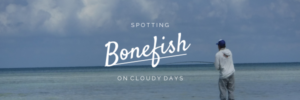There are many factors that affect the location and behavior of bonefish. However, none of these is more important than tides. Although tidal changes throughout the month vary by location, the resulting actions of bonefish do not. Bonefish use tides to their advantage. They leverage tides to both evade predators and feed. Whether changes in water depth measure in mere inches (which is often the case in the Caribbean) or several feet (as in Mexico), Bonefish respond similarly across the globe. Following is everything that you need to know about bonefish and tides ahead of your next excursion.
Incoming Tide
Bonefish tend to be scarce and harder to spot when the tide is low and there’s little water movement. A great time to target bones is during the incoming tide. Also known as the flood current, the incoming tide will be at its highest just before high tide. As more water flows in, you’ll start seeing more activity on the flats. You can fish the entire incoming tide from end to end, and you won’t see any significant decrease in either bonefish or tailing until the slack tide arrives.
Outgoing Tide
Outgoing tide or the ebb current comes just before the arrival of low tide. You’ll want to catch the outgoing tide just as high tide reaches its end. You may notice a lot of slack or slow-moving water, and less bonefish movement overall, but you’ll also spot a number of bonefish scattering just before the water level gets too low. This gives you a short window of opportunity to make a few quick, accurate casts.
High Tide
The best opportunities to catch bonefish often come with high tide. There’s more water present and greater water movement all. This means that bones are less likely to be on high alert and more likely to engage with your fly.
Low Tide
Low tides mean lower water levels, less water movement, and fewer bones on the flats. The limited numbers of bonefish that you spot during times of low tide are also more likely to be easily spooked. Although low tide isn’t the preferred time for fishing among most anglers, there are still ways to haul in an impressive catch. Consider positioning yourself near the deeper waters that fill the channels and holes next to the flats until the tide changes.
What Is the “Best” Tide?
If you know what you’re doing and understand the behaviors of bonefish in relation to the tides, there’s really never a bad time to go bonefishing. Even at low tide and during the outgoing tide, there are always ways to spot this elusive species. However, the best time for fishing is undoubtedly during high tide. Higher water levels and plenty of water movement make bones less cautious, more confident, and more likely to both spot and engage with your fly.








